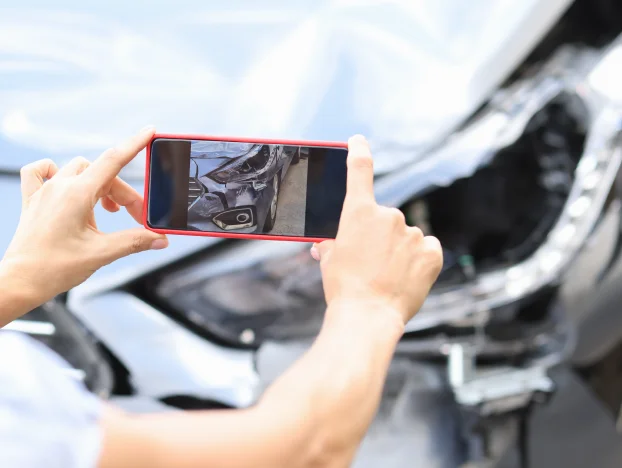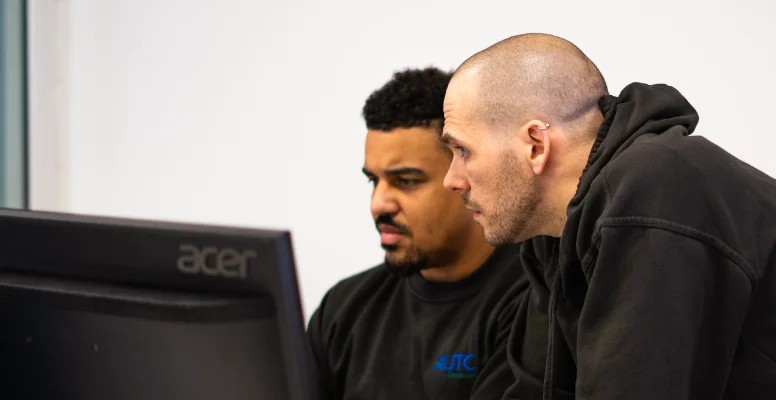How to prove a car accident wasn’t your fault
Car accidents are not situations that anybody want’s to find themselves in. A common question people ask online after an accident is ‘How to prove car accident wasn’t your fault?’

If you’ve been in a car accident that wasn’t your fault, the first and most important aspects are:
Calling your own insurance company first after the accident is the option that will likely affect your insurance in a negative way. It seems like instinct but is not the most beneficial option.
Read more information on evidence collection
Useful Tip: Use a mixture of drawn diagrams, photographs and videos to collect evidence of the accident.
Next, you need to make a non-fault accident claim and present all of your evidence to your claims handler. They will then use this to prove that the accident wasn’t your fault while claiming against the other driver’s insurance policy.
To effectively prove the car accident wasn’t your fault, an important decision to make is who you choose to process your non-fault claim.
It’s common for people to call their own insurance company first after an accident. However, working with an Accident Management Company instead will provide you with an independent, non-fault expert team to help with your claims management and claim success.
Speak to us now on 0330 128 1407 →
Learn how to claim with an Accident Management Company
Remember: Car accidents are not always clear cut, and how to prove a car accident wasn’t your fault isn’t always clear cut either.
Car accidents are unfortunately a common occurrence on UK roads and can often be quite a stressful experience.
If you are involved, it is important to know what to do in a car accident and how to prove car accident wasn’t your fault to ensure that you receive the best possible outcome.
The other driver may try to blame you, or the insurance company may try to deny your claim. But with the right evidence, you can make sure that you’re not left with the personal and financial burden.
A non fault claim can be difficult to succeed in if the non-fault driver isn’t able to prove that it wasn’t their fault.
The negative impact that this can have financially and emotionally on people is difficult.
However, the process in proving the car accident wasn’t your fault can be relatively straightforward. It all starts with:
But first, have you just been involved in a car accident that wasn’t your fault?
If you are reading this because you have just had a car accident that wasn’t your fault, the most beneficial first contact after a non-fault accident is Auto Claims Assist.
As specialists in Accident Claims Management and Credit Hire, we are an independent accident specialist that is on your side.
We will process the non-fault claim directly through the other driver’s insurance company, and not through your own insurance policy. This helps you to:
There are many different types of car accidents that occur across the UK. Some of the most common include rear-end collisions, head-on collisions, reversing accidents and side impact crashes.
The type of accident you have doesn’t always determine who is at fault. However, understanding the type of car accident you have been involved in, hopefully, helps to guide you in how to prove a car accident wasn’t your fault and determine fault.
If you’d like to speak to a non-fault accident expert about how to prove a car accident wasn’t your fault, give us a call and speak to one of our experts on what your next steps are.
Trustpilot
"Auto Claims we're very quick and efficient at dealing with my claim. The agent, Ron, who was handling my enquiry was very informative and kept me up to date at every step of the way, ensuring that the process was simple and fuss free from my end. I couldn't recommend enough, thank you for the great service."
Side-impact collisions are a common type of car accident. They occur when two cars collide and the force of the impact is concentrated on a vehicles side. Due to how they occur, they are very serious and can cause serious car injuries. Instances of a side impact collision include:
A sideswipe accident is when two cars collide while travelling alongside each other.
They can occur when one car tries to change lanes and ends up hitting the car next to them.
A t-bone accident is a type of side-impact collision in which the front of one vehicle crashes into the side of another.
These accidents often occur at intersections:
If the accident you have been involved in happened under any of these circumstances and you were the driver who either:
These accidents often occur at intersections:
It’s likely that you were not at fault in this scenario. However this isn’t always the case. It’s very important to gather all of the information you need to prove that you weren’t at fault.
A head-on collision is when two vehicles collide into each other head-on.
This type of collision commonly occurs when one vehicle is attempting to pass another vehicle and ends up crossing into the oncoming lane.
Head-on collisions are extremely dangerous, if not one of the most dangerous, and can result in serious accident injuries or death.
Generally, the driver who was negligent in their judgement or behaviour is the driver who is at fault.
This will include factors such as:
This may be determined by looking at the specific rules of the road of where the accident occurred, including listening to witness reports if there are any.
By understanding where and how the vehicles had the head-on collision, you will be able to analyse the road signs and signals, followed by a determination of fault.
If the determination was that the other driver was passing into your direction of passage and right of way, they are likely to be at-fault for the accident.
A rear-ended collision occurs when the car in front is suddenly hit from behind.
Rear-end collisions are some of the most common types of car accidents.
The driver who is following must ensure they were following the highway code lawfully and not driving recklessly, sticking to typical minimum stopping distances.
While the driver in front must ensure that their driving manner is safe, performing manoeuvres in necessary ways correctly.
Call us 0330 128 1407
Start your claim now >
In most cases, the driver who hits the other car in the rear of the vehicle is often considered at fault.
However, there are situations in which the driver who was hit from behind may be responsible for the accident. For example, the driver ahead may intentionally or unnecessarily stopped in a manner that causes the accident.
Evidence and witness reports on an intentional or unnecessary stop will likely need to be provided.
The determination of rear-end accidents is often down to the driver behind not correctly paying attention or sticking to the highway code. These factors include:
A car park accident is a collision that takes place in a car park. These accidents can be caused by a variety of factors, including:
Within these factors, common causes of car park accidents include:
Due to the close proximity of vehicles and people. The presence of obstacles such as pillars, bollards, and parked cars may also contribute.
These are some of the best ways to avoid accidents in a car park. In addition, always follow the car park’s rules and right of way to ensure safety.
Proving an accident wasn’t your fault in a car park can sometimes be straightforward, but circumstances can sometimes make fault determination difficult. If you are involved in a car park accident, the common situations are:
However, the individual circumstances do matter and can change the verdict. When it comes to how to prove a car accident wasn’t your fault in a car park, there are a few things to consider:
Visit our guide to car park accidents and who’s at fault in the UK →
A car accident reversing is when two cars collide while one or both cars are reversing. In this type of accident, there is usually less time to react and one driver, if not both, will tend to be unaware of the other. This might be due to blind spots in a driver’s view or simply down to a driver’s attention or abilities when reversing.
The result of an impact like this can then cause heavy car damage and also personal injury damages.
Determining fault and how to prove a car accident wasn’t your fault in these accidents comes down to the individual circumstances. As a rule of thumb:



If the accident wasn’t your fault, you are eligible to start a non-fault claim.
After an accident, there may be a lot of shock and panic. It’s difficult to think rationally and determine what has to happen next.
However, once everyone is safe, understanding how to prove a car accident wasn’t your fault comes down to these key moments.
See our guide on what to do after a car accident →
In order to prove that a car accident was not your fault, you will need to provide evidence that supports your claim. You also need to note down all of the correct information required.
Useful Tip: When collecting your videos, commentate in them. You can identify any key points, giving your claims handler a better understanding of how it all happened. This can help you later in how to prove a car accident wasn’t your fault.
Trustpilot
"Excellent service, professional team, and outstanding timeliness and work quality. Shardane provided flexible and professional assistance, ensuring my claim was resolved within a specific time frame with exceptional attention to quality. Highly recommended!"
Making a claim for a non-fault accident may affect your insurance if you claim directly with your own insurance company. This is why taking notes on 'how to prove car accident wasn’t your fault?' is so important.
If you call your insurance company first after an accident, you are claiming against your own insurance policy.
In the eyes of most insurers, it doesn’t matter if you are claiming as the at-fault party or non-fault party. Until the claim has settled, your own insurance policy may still be held liable for the accident.
Therefore, as a result, you may experience:
Although the car accident wasn’t your fault, claiming directly with your insurer means they will add a ‘pending claim’ onto your policy.
While that ‘pending claim’ is still active, your policy is still at risk of liability for the car accident. If your insurance renewal comes around while you have this pending claim, your new renewal will take this into consideration with an increased premium.
Your insurance no claims discount is not looked at as a ‘no blame discount’.
It doesn’t matter if the accident wasn’t your fault. By making a claim directly with your insurance company, and on your own policy, your no claims discount can be reduced or removed.
Losing your no claims discount will have an effect on your next insurance premium. It will also increase your future insurance premiums.
Avoiding the impact on your insurance and how to prove a car accident wasn’t your fault with a non-fault specialist Accident Management Company.
Providing that the accident wasn’t your fault, you can avoid the impact that a non-fault claim can have on your insurance.
Your first contact after the accident, if it wasn’t your fault, should be an accident management company (also known as a credit hire company) like Auto Claims Assist.
Some people think that the first thing they need to do after a non-fault accident is to contact their own insurance company.
In light of this, we have created a comparison between calling an accident management company vs your insurance company here after a non-fault accident.
Using your own insurer could leave you worse off if the accident wasn’t your fault.
To speak to an advisor for advice and guidance on getting started after a non-fault claim, call 0330 128 1407.
To start your claim now, use our online claim form to submit your non-fault accident details.





If the accident wasn’t your fault, you are eligible to start a non-fault claim.
Related articles
Visit Resource CentreHow to prove a car accident wasn’t your fault
Do I have to pay excess if the accident wasn't my fault
Do I lose my no claims if the accident wasn't my fault
Will A Non Fault Accident Affect My Insurance
Accident Management VS Your Insurance Company


Our team of non-fault claim specialists are ready to answer any questions you have. Provide your details here to request a callback. One of our advisors will call you back as soon as possible. Alternatively, call us on 0330 128 1407 to speak to someone now.
One of our team will give you a call